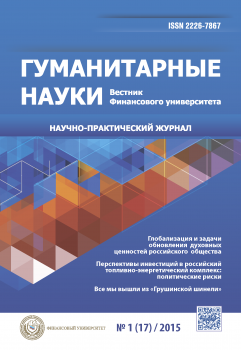The theory of political business cycles is focused on the possibility for manipulating of the macroeconomic variables — gross domestic product output, unemployment level, and inflation in order to obtain political advantages in the process of future elections in a democratic society. The periodicity of elections results in cyclical movements at the national economy. The impacts on the economy are carried out through the monetary policy pursued by the Central Bank. The Central Bank is independent from the government in its operational activities. However, de-facto the Central Bank’s top management has a lot of connections with the government, paving the later with hidden from voter channels for monetary policy manipulating in the government’s political interests. The active manipulation of the American economy by the president Richard Nixon in 1972 in his own political goals had drawn William Nordhaus attention and had formed the basis for creation by him the theory of political business cycles. The present paper devoted to analysis of the Nordhaus research (1975) motives in the context of American political and macroeconomic situation during the Richard Nixon’s presidency. Data on the monetary policy manipulation pursued by the US Federal Reserve System during the elections of 1972 and their macroeconomic consequences are considered. The personal and professional relationship of Arthur F. Burns and Richard Nixon are analyzed separately.
political business cycle theory, monetary policy, manipulation of American economy, US Federal Reserve System, presidential election of 1972, aggregate voting function, reverse political discounting, democratic elections models.
1. Nordhaus, W. (1975). The political business cycle. Review of Economic Studies 42:169-190.
2. Drazen, A. (2001). The political business cycle after 25 years, in B. Bernanke and K. Rogoff , eds. NBER Macroeconomics Annual 2000 (MIT Press, Cambridge, MA), 75- 117.
3. Keller, Robert R. and Ann M. May. “The Presidential Political Business Cycle of 1972.” Journal of Economic History 44, (1984): 265-71.
4. Auerbach Robert D. Politics and the Federal Reserve, Contemporary Economic Policy. Volume 3, Issue 5, pp. 43-58, September 1985. DOI:https://doi.org/10.1111/j.1465-7287.1985.tb00821.x
5. Burton A. Abrams. How Richard Nixon Pressured Arthur Burns: Evidence from the Nixon Tapes. Journal of Economic Perspectives - Volume 20, Number 4 - Fall 2006 - pp. 177-188.
6. Heckelman, Jac. “Historical Political Business Cycles in the United States”. EH. Net Encyclopedia, edited by Robert Whaples. August 14, 2001. URLhttp://eh.net/encyclopedia/historical-political-business-cycles-in-the-united-states/
7. John Ehrlichman, (1982) Witness to Power: The Nixon Years (New York, Simon & Schuster; First Edition) p. 244-248. ISBN-10: 0671242962 ISBN-13: 978-0671242961
8. Milton Friedman, Monetary Policy Structures. Cato Journal, Vol. 34, No. 3 (Fall 2014). pp. 631-656.
9. Nordhaus, W. (1989). Alternative approaches to political business cycle. Brookings Papers on Economic Activity, 2, 1-49.
10. Downs, A. (1957) An Economic Theory of Democracy. New York: Harper Collins.
11. Paldam, Martin (2004), Are Vote and Popularity Functions Economically Correct?, in Charles K. Rowley and Friedrich Schneider (eds.), The Encyclopedia of Public Choice, Dordrecht: Kluwer, pp.49-59.
12. Lucas, Robert E. (1976): “Econometric Policy Evaluation: A Critique,” Carnegie-Rochester Conference Series on Public Policy 1, 19-46.
13. Muth, J. F. (1961), “Rational Expectations and the Theory of Price Movements”, Econometrica, 29.
14. Calvo, G.A., 1983. Staggered prices in a utility-maximizing framework. J. Monet. Econ. 12, 383-398.
15. Dixit, A. K., and J. E. Stiglitz (1977): “Monopolistic Competition and Optimum Product Diversity,” American Economic Review, 67(3), 297-308.





